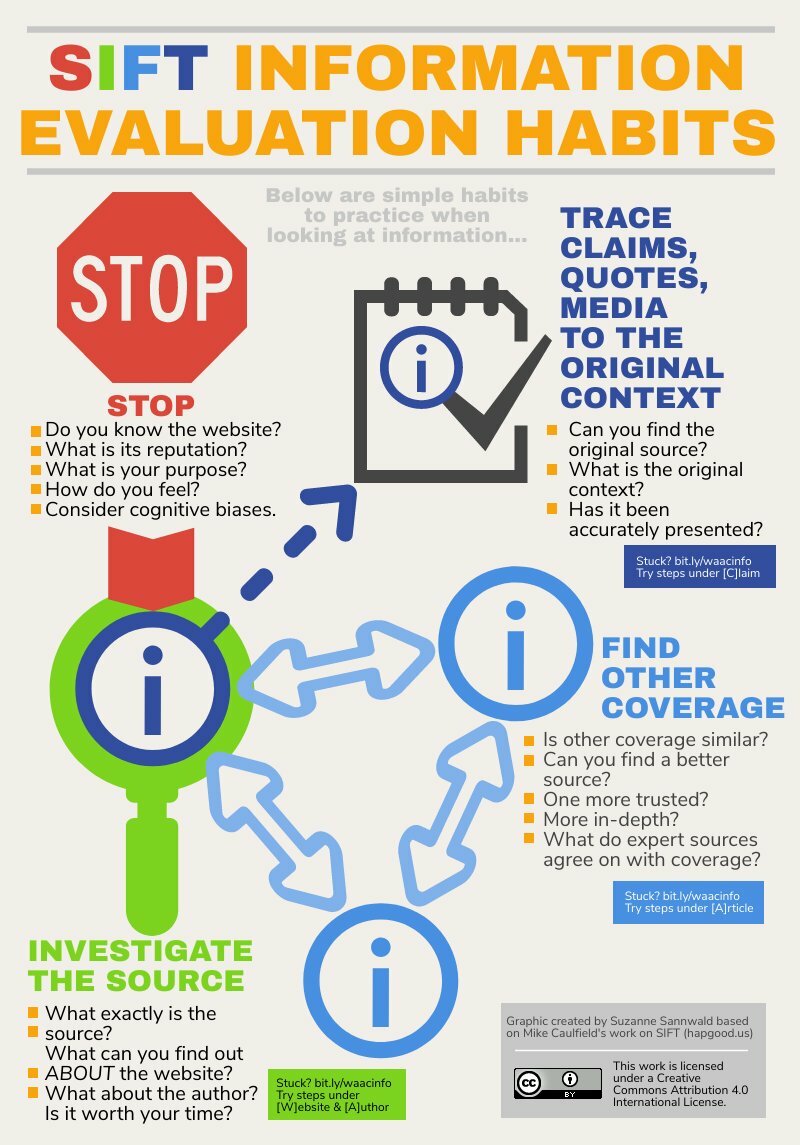
The first move is the simplest. STOP reminds you of two things.
First, when you first hit a page or post and start to read it — STOP. Ask yourself whether you know the website or source of the information, and what the reputation of both the claim and the website is. If you don’t have that information, use the other moves to get a sense of what you’re looking at. Don’t read it or share media until you know what it is.
We’ll go into this move more on the next page. But idea here is that you want to know what you’re reading before you read it.
Sometimes you don’t care about the particular article or video that reaches you. You care about the claim the article is making. You want to know if it is true or false. You want to know if it represents a consensus viewpoint, or if it is the subject of much disagreement.
Much of what we find on the internet has been stripped of context. Maybe there’s a video of a fight between two people with Person A as the aggressor. But what happened before that? What was clipped out of the video and what stayed in? Maybe there’s a picture that seems real but the caption could be misleading. Maybe a claim is made about a new medical treatment based on a research finding — but you’re not certain if the cited research paper really said that.